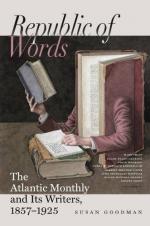The path wound around the base of El Volcan, on the level terrace or shelf from which it springs. As we advanced, we could distinctly perceive that the valley to our right rose gradually, with a gentle, but constant grade. At a distance of three miles it had nearly reached the level of the terrace along which we rode, and at the end of our fourth mile the terrace and the valley merged into each other, and the mule-path dipping into the waters of the stream, now reduced to a sparkling brook, resumed its direction on the opposite bank. We stopped here, in a natural park of tall pines, and lunched beneath their shade, drinking only the cool, clear water which murmured among the mossy stones at our feet. We needed no artificial stimulus; our spirits were high and buoyant; we had almost traced the Goascoran to its source; half an hour more must bring us to its fountain-head,—and then? We knew not exactly what then; but one thing was certain, that nothing in the form of a hill or mountain obstructed our advance, for the light, reflected from a clear sky, streamed horizontally between the tree-trunks in front, while on either hand the vistas were dark, and the outlines of gigantic mountains could be discerned towering to mid-heaven.
Half a mile farther on, crossing in the interval a number of little tributary streams, we came where the pines were more scattered; they soon disappeared, and we emerged upon an open glade or natural meadow. A high mountain, dark with forests, rose on our right; on the left was a long range of grassy hills; but in front all was clear! A government rancho, built under the shade of a couple of tall fruit-trees, stood in the middle of the savanna, and on its farther edge were the cane buildings of a cattle-hacienda,




